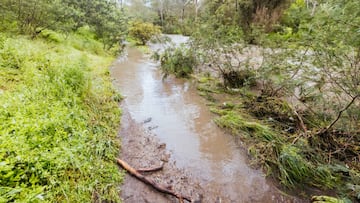What is La Niña and how does it impact the winter weather in the US?
Meteorologists are predicting La Niña conditions will continue for the third winter. What kind of weather will this bring to the US?


Meteorologists categorize atmospheric currents between two commonly tracked phenomena: La Niña and El Niño.
This year the National Oceanic and Atmospheric Association (NOAA) has predicted with ninety-one percent confidence that this winter will see La Niña conditions after cooler than average temperatures were seen in one of the key monitoring areas of the Pacific Ocean. Temperature around 1.0 °C (1.8 °F) cooler than the average temperature found in August, which is “substantially cooler than the La Niña threshold of 0.5 °C (0.9 °F) below average.”
While El Niño conditions are more common, however, since 2000, La Niña has made up the majority of events.
One weather phenomenon that has a higher probability of occurring during a La Niña is a polar vortex, and one is already brewing.
What is a polar Vortex
According to Severe Weather Europe, the "Polar Vortex behaves like a very large cyclone, covering the whole north pole, down to the mid-latitudes. It is connected through all atmospheric levels, from the ground up, but usually has different shapes at different altitudes."
The La Nina brings different conditions to various parts of the US, each of which can be examined separately.
Southwest and the Pacific Northwest
The Southwest, including the southern parts of California, Arizona, Nevada, New Mexico, and Utah, can expect drier than average winter, which will not help the areas which are experiencing historic and unprecedented drought conditions. For California, a La Nina brings with it a lower possibility of an atmospheric river developing over the state, which can lead to catastrophic flooding.
As for the Pacific Northwest, NOAA predicts a wetter-than-average winter.
Mid-West and Northern Rockies
Setting the possibility of a Polar Vortex aside, La Niña typically brings colder-than-average temperatures to the region. The northern regions, in general, including Montana, Idaho, Minnesota, North Dakota, and South Dakota, often see more snow and rainfall during La Niña.
South East
Related stories
From Texas through the rest of the southern states, warmer and drier temperatures are often seen during a La Niña. La Niña can also often bring a more active hurricane season with it.
North East
The effects of La Niña are the opposite in the North East, where residents can expect cool temperatures and more snow and rain.